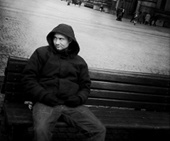 I’ve got an article in The Atlantic on how paranoia and psychosis are more common in cities and why the quest to explain the ‘urban psychosis effect’ is reshaping psychiatry.
I’ve got an article in The Atlantic on how paranoia and psychosis are more common in cities and why the quest to explain the ‘urban psychosis effect’ is reshaping psychiatry.
The more urban your neighbourhood, the higher the rate of diagnosed schizophrenia and you are more likely to experience what are broadly known as ‘non-affective psychosis-psychoses’ – that is, delusions, hallucinations, and paranoia not primarily caused by mood problems.
This has led to a long and ongoing debate about why this is, with some arguing that it is an effect of city-living on the mind, while others arguing the association is better explained by a complex interaction between genetic risk factors and limited life chances.
The article discusses the science behind exactly this debate, partly a judgement on the value of the city itself, and notes how it’s pushing psychiatry to re-examine how it deals with what is often euphemistically called ‘the environment’.
Link to ‘The Mystery of Urban Psychosis’ in The Atlantic.
Or, there are more people in the city, therefore a greater chance of more people who develop the mental illness. Correlated, but not caused.
please re-read the post. higher rate means # diagnosed ÷ # in population (and no, it doesn’t mean # diagnosed per unit time)
Put a wealthy person in a poor neighborhood and what can happen? Robbery. People need money. Even though it is made of concrete and such, the city is still a jungle of people who want your money. To deny that reality is insane.
“delusions, hallucinations, and paranoia” can be explained by rational fears of being robbed. Looking for places where potential danger is or escape can be, and the artificial lighting creates impossible multiple shadows (in the wild , there is only one shadow from the sun/moon). Is that door ahead locked? Do you know the area? Visual pollution, sound pollution ( sirens and noise), and smell of car exhaust and dog feces. 24/7.
Want to live in the country? How are you going to make money?
Mood disorders and mood swings are not uncommon, but it may sometimes be difficult to recognize the difference between a disorder and just a rough day. there is nothing strange about mood changes, especially in highs and lows of experiences. However, the difference is when mood changes happen nearly separately from events. We may feel happy in times of celebration or sad when tragedy strikes, but these feeling occurring on their own indicate a mood disorder. These conditions may be heightened when a person is trying to adapt to new surroundings. Moving from a quiet town to big city may be a little overwhelming and fitting in might be a difficult task at first. This first part can possibly lead to a depressed state, which can influence moods in a negative way. This is why mood is a tricky facet to study. There are so many influences that can affect mood.